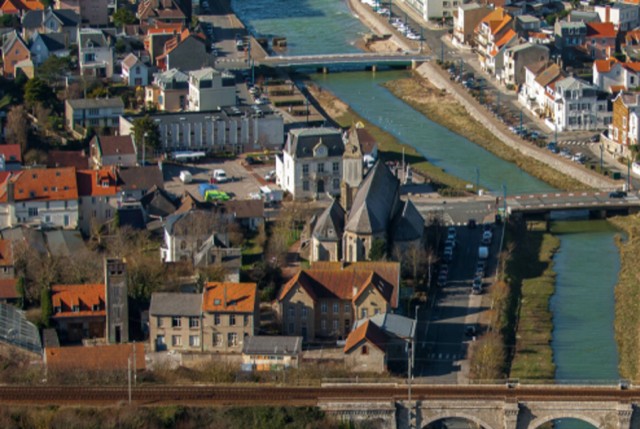Wimereux’s central area, including Place Albert 1er and its surrounding buildings, faces increasing heat stress, particularly impacting vulnerable populations such as the elderly and children. In response, the municipality has launched a greening initiative under the Cool Neighbourhoods project to address these challenges and improve urban liveability.
Challenges and Opportunities
Wimereux’s central area highlights a mix of challenges and opportunities in climate adaptation:
- Heat Stress Impact: Rising temperatures disproportionately affect vulnerable populations, underscoring the urgency for heat mitigation measures.
- Financial and Heritage Constraints: Limited resources and restrictions related to historic preservation add complexity to project implementation.
- Community Strengths: Political commitment and strong community engagement provide a foundation for inclusive and effective action.
The project aims to create a refreshing and functional gathering space by integrating nature-based solutions, such as increasing greenery and shaded areas and using innovative cooling materials. These interventions align with the municipality’s neighbourhood heat stress action plan.
Pilot Focus: Nature-Based Solutions and Community Involvement
Wimereux’s pilot project emphasises:
- Greening the Square: Enhancing Place Albert 1er with trees, plants, and shaded areas to reduce heat stress and improve liveability.
- Innovative Materials: Using cooling materials in infrastructure to enhance the effectiveness of greening efforts.
- Tourist Office Integration: Extending greening initiatives to adjacent buildings to create a cohesive cooling environment.
Community-Centric Approach
Central to the project’s success is community engagement. Local citizens, particularly vulnerable groups, are involved in both planning and implementation. This participatory approach ensures the initiative addresses residents’ needs while fostering a sense of ownership and stewardship.
Strengthening Knowledge and Skills
To ensure sustainable outcomes, the project incorporates training programs and citizen science initiatives:
- Training for Local Teams: Equipping municipal staff and volunteers with technical skills for implementing and maintaining green infrastructure.
- Citizen Science: Involving the community in monitoring and evaluating the project’s impact, fostering environmental awareness and engagement.
Overcoming Challenges
Despite external pressures, including funding uncertainties and environmental changes, Wimereux is committed to creating a model for community-driven climate adaptation. Key strategies include:
- Public Awareness Campaigns: Hosting workshops and educational programs to increase understanding of urban heat and climate resilience.
- Inclusive Engagement: Developing tailored strategies to involve diverse community members in the decision-making process.
- Resilience Building: Demonstrating how local actions can effectively mitigate climate change impacts while enhancing urban liveability.
Looking Ahead
The greening of Wimereux’s central area represents an important step towards creating a more resilient and liveable urban environment. By prioritising nature-based solutions and fostering community involvement, the project not only addresses immediate climate challenges but also sets a precedent for other municipalities seeking sustainable and inclusive climate adaptation strategies.
Follow the "From Grey to Green" series to witness Wimereux’s journey as it transforms its historic square into a vibrant, climate-resilient hub that balances heritage preservation with modern environmental needs.
Image: The Wimereux’s Inner City Neighbourhood Pilot Location
